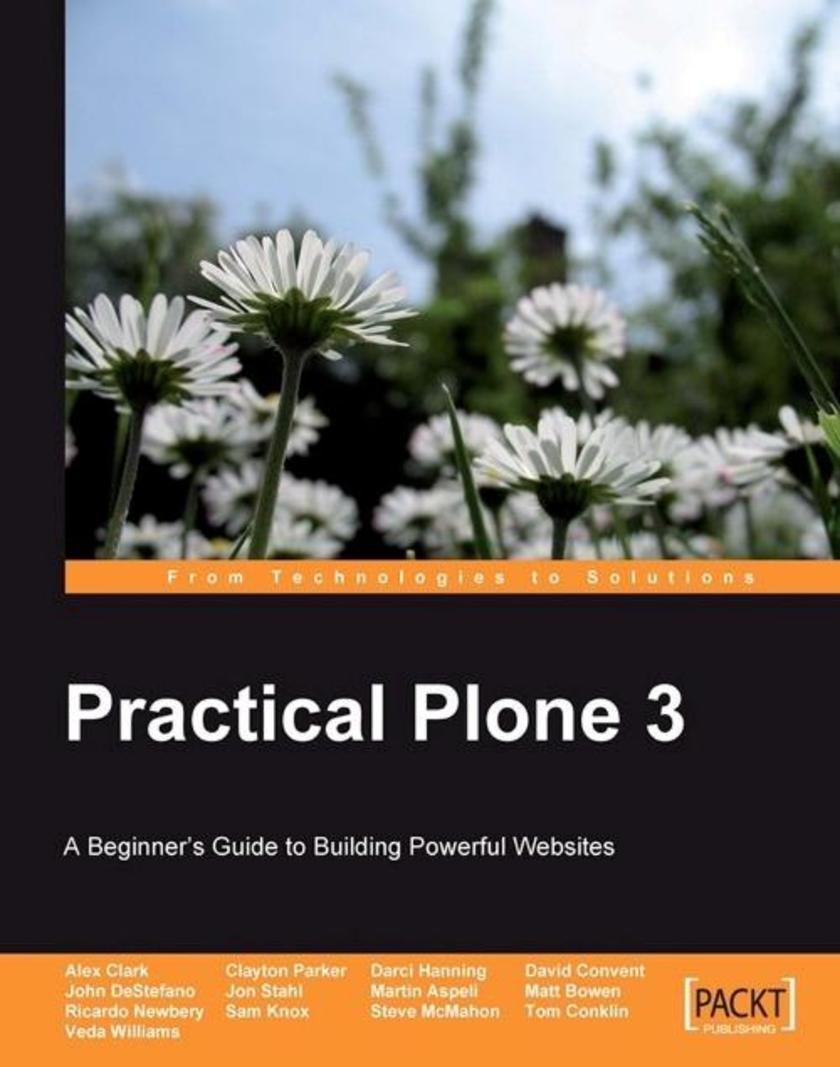
Practical Plone 3: A Beginner's Guide to Building Powerful Websites
¥90.46
This is a beginner's practical guide that doesn't involve any code or programming concepts. You will learn by pointing and clicking on the options available in front of you. It includes easy-to-follow instructions and screenshots that will guide you through creating a powerful website. Each chapter stands alone and you need not go through all the chapters. You can pick and choose depending upon your requirements. If you want to get a Plone site up and running quickly and don't want to get involved in programming, this book is for you. This book is aimed at beginners, who want to configure and customize Plone to meet their content management needs. The book doesn't expect programming skills, although some knowledge of fundamental web concepts such as HTML and HTTP may be helpful.

ODP.NET Developer’s Guide
¥90.46
This book uses many hands-on examples to show you how to use ODP.NET and Oracle Developer Tools from within Visual Studio 2005 to access Oracle Database 10g. The book is written for professional .NET developers who need to work with and take full advantage of Oracle Database 10g using Visual Studio 2005. Developers are expected to be familiar with Visual Basic.NET 2005 and have minimum knowledge of Oracle SQL and PL/SQL.
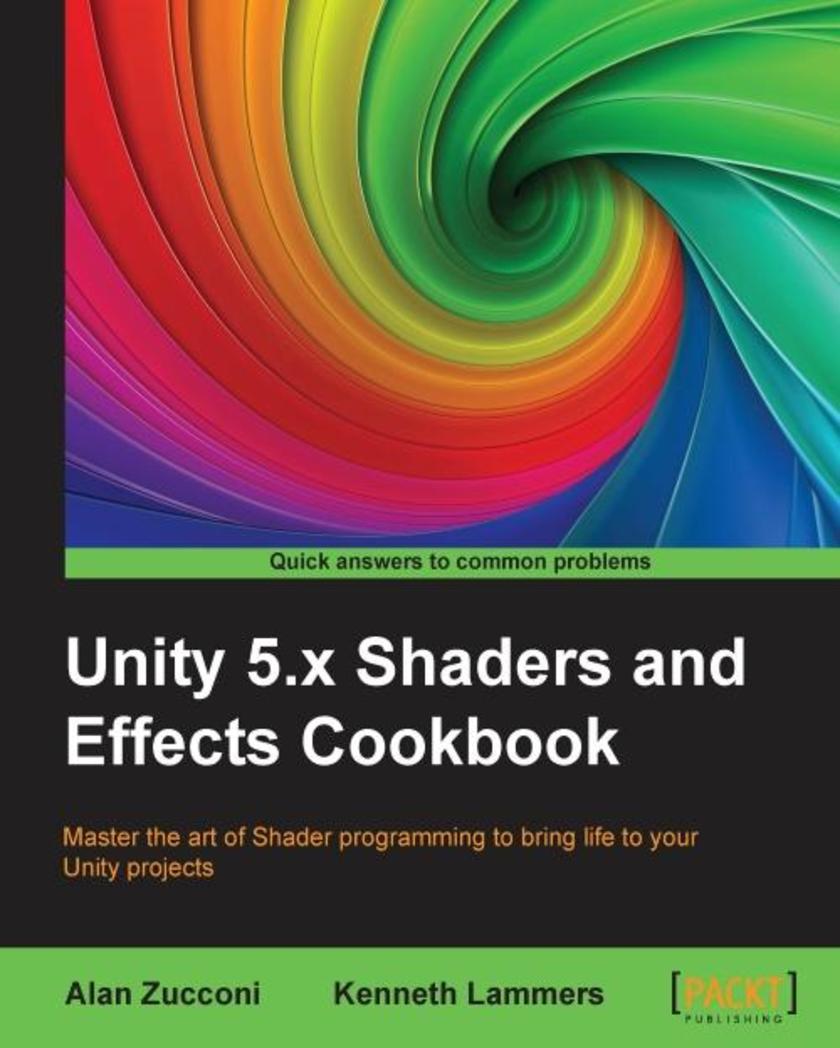
Unity 5.x Shaders and Effects Cookbook
¥90.46
Master the art of Shader programming to bring life to your Unity projectsAbout This BookThis book will help you master the technique of physically based shading in Unity 5 to add realism to your game quickly through precise recipesFrom an eminent author, this book offers you the fine technicalities of professional post-processing effects for stunning resultsThis book will help you master Shader programming through easy-to-follow examples to create stunning visual effects that can be used in 3D games and high quality graphics.Who This Book Is ForUnity Effects and Shader Cookbook is written for developers who want to create their first Shaders in Unity 5 or wish to take their game to a whole new level by adding professional post-processing effects. A solid understanding of Unity is required.What You Will LearnUnderstand physically based rendering to fit the aesthetic of your gameEnter the world of post-processing effects to make your game look visually stunningAdd life to your materials, complementing Shader programming with interactive *sDesign efficient Shaders for mobile platforms without sacrificing their realismUse state-of-the-art techniques such as volumetric explosions and fur shadingBuild your knowledge by understanding how Shader models have evolved and how you can create your ownDiscover what goes into the structure of Shaders and why lighting works the way it doesMaster the math and algorithms behind the most used lighting modelsIn DetailSince their introduction to Unity, Shaders have been notoriously difficult to understand and implement in games: complex mathematics have always stood in the way of creating your own Shaders and attaining that level of realism you crave. With Shaders, you can transform your game into a highly polished, refined product with Unity’s post-processing effects.Unity Shaders and Effects Cookbook is the first of its kind to bring you the secrets of creating Shaders for Unity3D—guiding you through the process of understanding vectors, how lighting is constructed with them, and also how textures are used to create complex effects without the heavy math.We’ll start with essential lighting and finishing up by creating stunning screen Effects just like those in high quality 3D and mobile games. You’ll discover techniques including normal mapping, image-based lighting, and how to animate your models inside a Shader. We’ll explore the secrets behind some of the most powerful techniques, such as physically based rendering! With Unity Shaders and Effects Cookbook, what seems like a dark art today will be second nature by tomorrow.Style and approachThe recipes in this book contain step-by-step instructions, complemented by screenshots and code, and real-world examples.
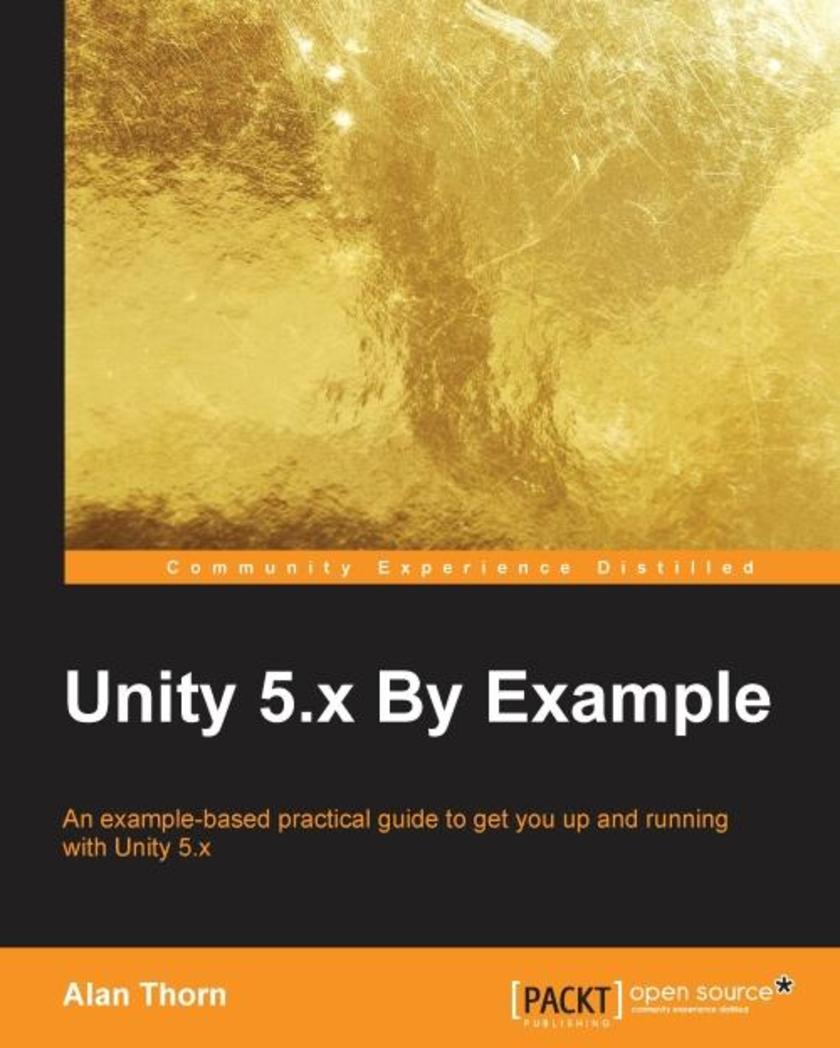
Unity 5.x By Example
¥90.46
An example-based practical guide to get you up and running with Unity 5.x About This Book The most updated resource on Unity 5.x with comprehensive discussion on all the new features of Unity 5.x Understand the core concepts surrounding Unity5 game development with this power-packed hands-on guide Brush up your existing game development skills and create games that have a brilliant gameplay using the excellent examples from this book Who This Book Is For The ideal target audience for this book would be game developers. They need not have previous experience with Unity since this book will cover all the basics about game development with unity. This would also be a very good resource for Unity developers who want to brush up their basic Unity skills and also get up and running with creating interesting games with Unity 5.x. What You Will Learn Understand core Unity concepts, such as game objects, components, and scenes Learn level design techniques for building immersive and interesting worlds Learn to make functional games with C# *ing Use the toolset creatively to build games of different themes and styles Learn to handle player controls and input functionality Dive into the process of working with terrains and world-creation tools Import custom content into Unity from third-party tools, such as Maya and Blender Get to grips with making both 2D and 3D games In Detail Unity is an exciting and popular engine in the game industry. Throughout this book, you’ll learn how to use Unity by making four fun game projects, from shooters and platformers to exploration and adventure games. Unity 5 By Example is an easy-to-follow guide for quickly learning how to use Unity in practical context, step by step, by making real-world game projects. Even if you have no previous experience of Unity, this book will help you understand the toolset in depth. You'll learn how to create a time-critical collection game, a twin-stick space shooter, a platformer, and an action-fest game with intelligent enemies. In clear and accessible prose, this book will present you with step-by-step tutorials for making four interesting games in Unity 5 and explain all the fundamental concepts along the way. Starting from the ground up and moving toward an intermediate level, this book will help you establish a strong foundation in making games with Unity 5. Style and approach This book would be a very unique resource for any game developer who wants to get up and running with Unity. The unique example based approach will take you through the most basic games towards the more complex ones and will gradually build your skill level.
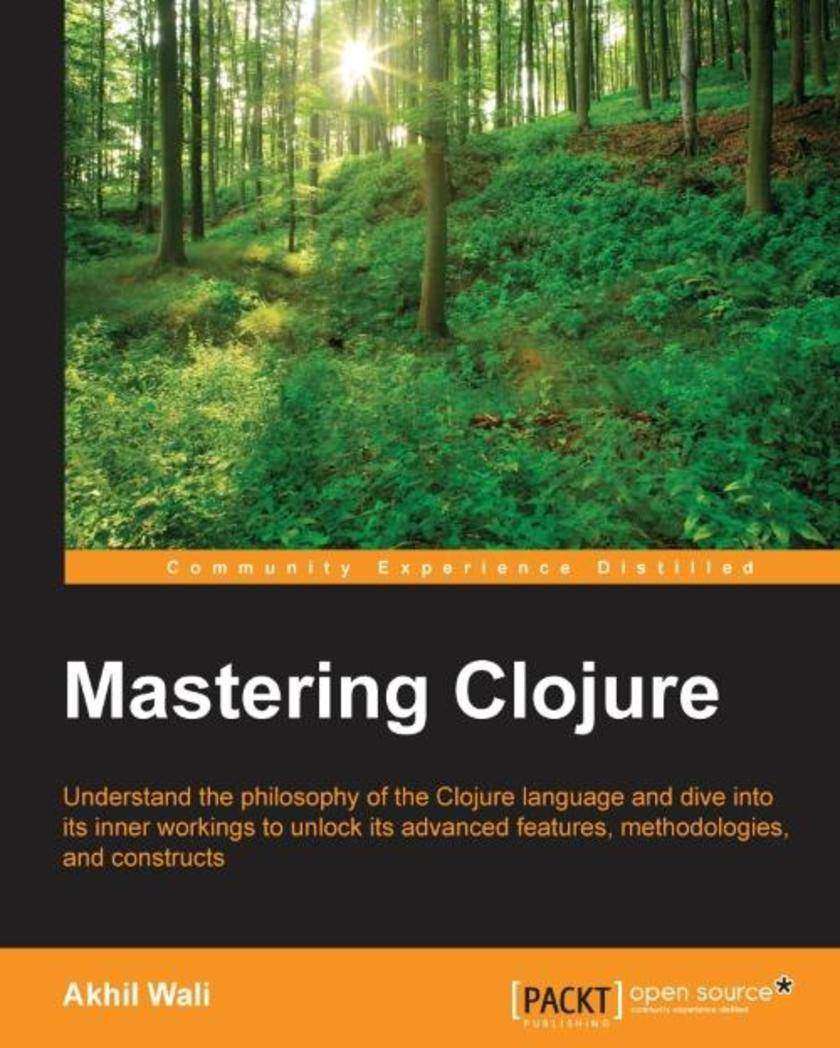
Mastering Clojure
¥90.46
Understand the philosophy of the Clojure language and dive into its inner workings to unlock its advanced features, methodologies, and constructs About This Book Learn to handle data using sequences, reducers, and transducers in Clojure Explore the lesser known and more advanced features, constructs, and methodologies of the Clojure language and its ecosystem, such as asynchronous channels, actors, logic programming, and reactive programming Sharpen your Clojure skills through illustrative and comprehensive examples Who This Book Is For If you’re looking to learn more about the core libraries and dive deep into the Clojure language, then this book is ideal for you. Prior knowledge of the Clojure language is required. What You Will Learn Maximize the impact of parallelization, functional composition, and process transformation by composing reducers and transducers Process and manipulate data using sequences, reducers, and transducers in Clojure Modify and add features to the Clojure language using macros Explore the features of category theory and custom data sources for logic programming in Clojure Orchestrate parallelism and concurrency using built-in primitives as well as community libraries in Clojure Handle data with asynchronous and reactive programming methodologies and leverage it using the core.async library Test your code with unit tests, specs, and type checks to write testable code Troubleshoot and style your Clojure code to make it more maintainable In Detail Clojure is a general-purpose language from the Lisp family with an emphasis on functional programming. It has some interesting concepts and features such as immutability, gradual typing, thread-safe concurrency primitives, and macro-based metaprogramming, which makes it a great choice to create modern, performant, and scalable applications. Mastering Clojure gives you an insight into the nitty-gritty details and more advanced features of the Clojure programming language to create more scalable, maintainable, and elegant applications. You’ll start off by learning the details of sequences, concurrency primitives, and macros. Packed with a lot of examples, you’ll get a walkthrough on orchestrating concurrency and parallelism, which will help you understand Clojure reducers, and we’ll walk through composing transducers so you know about functional composition and process transformation inside out. We also explain how reducers and transducers can be used to handle data in a more performant manner. Later on, we describe how Clojure also supports other programming paradigms such as pure functional programming and logic programming. Furthermore, you’ll level up your skills by taking advantage of Clojure's powerful macro system. Parallel, asynchronous, and reactive programming techniques are also described in detail. Lastly, we’ll show you how to test and troubleshoot your code to speed up your development cycles and allow you to deploy the code faster. Style and approach This is an easy-to-follow project-based guide that throws you directly into the excitement of Clojure code. Mastering Clojure is for anyone who is interested in expanding their knowledge of language features and advanced functional programming.
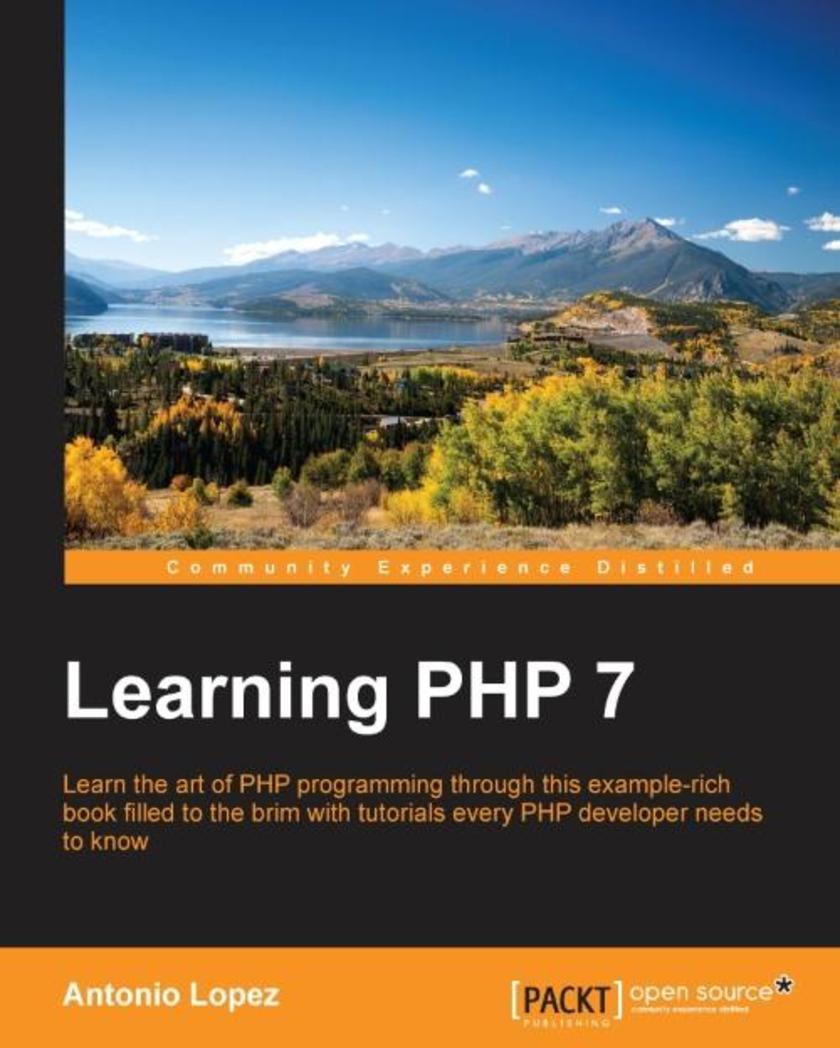
Learning PHP 7
¥90.46
Learn the art of PHP programming through this example-rich book filled to the brim with tutorials every PHP developer needs to know About This Book Set up the PHP environment and get started with web programming Leverage the potential of PHP for server-side programming, memory management, and object-oriented programming (OOP) This book is packed with real-life examples to help you implement the concepts as you learn Who This Book Is For If you are a web developer or programmer who wants to create real-life web applications using PHP 7, or a beginner who wants to get started with PHP 7 programming, this book is for you. Prior knowledge of PHP, PHP 7, or programming is not mandatory. What You Will Learn Set up a server on your machine with PHP Use PHP syntax with the built-in server to create apps Apply the OOP paradigm to PHP to write richer code Use MySQL to manage data in your web applications Create a web application from scratch using MVC Add tests to your web application and write testable code Use an existing PHP framework to build and manage your applications Build REST APIs for your PHP applications Test the behavior of web applications with Behat In Detail PHP is a great language for building web applications. It is essentially a server-side *ing language that is also used for general purpose programming. PHP 7 is the latest version with a host of new features, and it provides major backwards-compatibility breaks. This book begins with the fundamentals of PHP programming by covering the basic concepts such as variables, functions, class, and objects. You will set up PHP server on your machine and learn to read and write procedural PHP code. After getting an understanding of OOP as a paradigm, you will execute MySQL queries on your database. Moving on, you will find out how to use MVC to create applications from scratch and add tests. Then, you will build REST APIs and perform behavioral tests on your applications. By the end of the book, you will have the skills required to read and write files, debug, test, and work with MySQL. Style and approach This book begins with the basics that all PHP developers use every day and then dives deep into detailed concepts and tricks to help you speed through development. You will be able to learn the concepts by performing practical tasks and implementing them in your daily activities, all at your own pace.
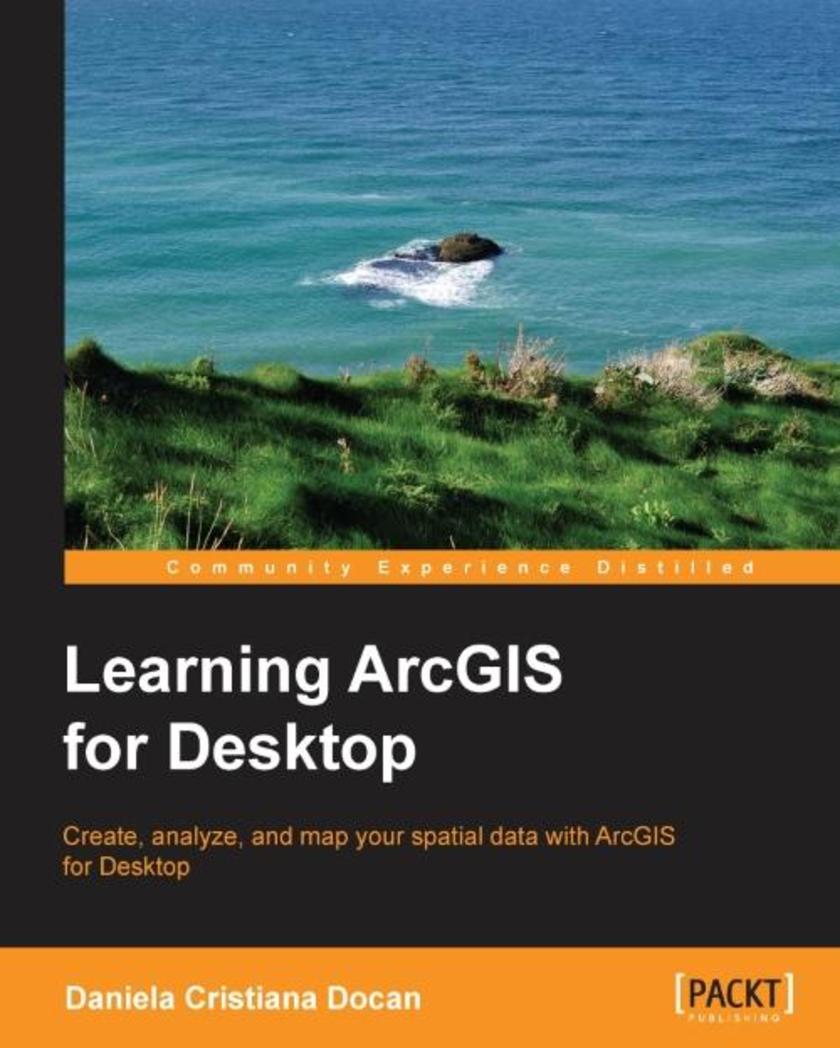
Learning ArcGIS for Desktop
¥90.46
Create, analyze, and map your spatial data with ArcGIS for Desktop About This Book Learn how to use ArcGIS for Desktop to create and manage geographic data, perform vector and raster analysis, design maps, and share your results Solve real-world problems and share your valuable results using the powerful instruments of ArcGIS for Desktop Step-by-step tutorials cover the main editing, analyzing, and mapping tools in ArcGIS for Desktop Who This Book Is For This book is ideal for those who want to learn how to use the most important component of Esri’s ArcGIS platform, ArcGIS for Desktop. It would be helpful to have a bit of familiarity with the basic concepts of GIS. Even if you have no prior GIS experience, this book will get you up and running quickly. What You Will Learn Understand the functionality of ArcGIS for Desktop applications Explore coordinate reference system concepts and work with different map projections Create, populate, and document a file geodatabase Manage, create, and edit feature shapes and attributes Built automate analysis workfl ows with ModelBuilder Apply basic principles of map design to create good-looking maps Analyze raster and three-dimensional data with the Spatial Analyst and 3D Analyst extensions In Detail ArcGIS for Desktop is one of the main components of the ESRI ArcGIS platform used to support decision making and solve real-world mapping problems. Learning ArcGIS for Desktop is a tutorial-based guide that provides a practical experience for those who are interested in start working with ArcGIS. The first five chapters cover the basic concepts of working with the File Geodatabase, as well as editing and symbolizing geospatial data. Then, the book focuses on planning and performing spatial analysis on vector and raster data using the geoprocessing and modeling tools. Finally, the basic principles of cartography design will be used to create a quality map that presents the information that resulted from the spatial analysis previously performed. To keep you learning throughout the chapters, all exercises have partial and final results stored in the dataset that accompanies the book. Finally, the book offers more than it promises by using the ArcGIS Online component in the tutorials as source of background data and for results sharing Style and approach This easy-to-follow guide is full of hands-on exercises that use open and free geospatial datasets. The basic features of the ArcGIS for Desktop are explained in a step-by-step style.
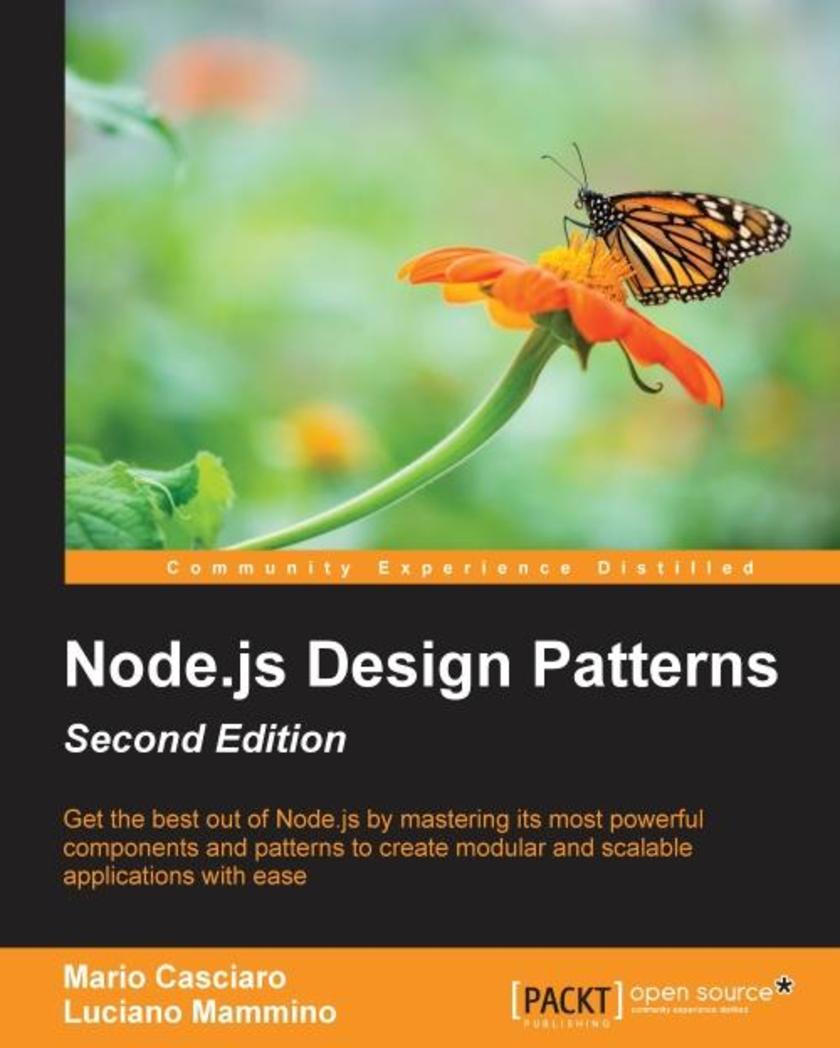
Node.js Design Patterns - Second Edition
¥90.46
Get the best out of Node.js by mastering its most powerful components and patterns to create modular and scalable applications with ease About This Book Create reusable patterns and modules by leveraging the new features of Node.js . Understand the asynchronous single thread design of node and grasp all its features and patterns to take advantage of various functions. This unique guide will help you get the most out of Node.js and its ecosystem. Who This Book Is For The book is meant for developers and software architects with a basic working knowledge of JavaScript who are interested in acquiring a deeper understanding of how to design and develop enterprise-level Node.js applications. Basic knowledge of Node.js is also helpful to get the most out of this book. What You Will Learn Design and implement a series of server-side JavaScript patterns so you understand why and when to apply them in different use case scenarios Become comfortable with writing asynchronous code by leveraging constructs such as callbacks, promises, generators and the async-await syntax Identify the most important concerns and apply unique tricks to achieve higher scalability and modularity in your Node.js application Untangle your modules by organizing and connecting them coherently Reuse well-known techniques to solve common design and coding issues Explore the latest trends in Universal JavaScript, learn how to write code that runs on both Node.js and the browser and leverage React and its ecosystem to implement universal applications In Detail Node.js is a massively popular software platform that lets you use JavaScript to easily create scalable server-side applications. It allows you to create efficient code, enabling a more sustainable way of writing software made of only one language across the full stack, along with extreme levels of reusability, pragmatism, simplicity, and collaboration. Node.js is revolutionizing the web and the way people and companies create their software. In this book, we will take you on a journey across various ideas and components, and the challenges you would commonly encounter while designing and developing software using the Node.js platform. You will also discover the "Node.js way" of dealing with design and coding decisions. The book kicks off by exploring the basics of Node.js describing it's asynchronous single-threaded architecture and the main design patterns. It then shows you how to master the asynchronous control flow patterns,and the stream component and it culminates into a detailed list of Node.js implementations of the most common design patterns as well as some specific design patterns that are exclusive to the Node.js world.Lastly, it dives into more advanced concepts such as Universal Java*, and scalability' and it's meant to conclude the journey by giving the reader all the necessary concepts to be able to build an enterprise grade application using Node.js. Style and approach This book takes its intended readers through a comprehensive explanation to create a scalable and efficient real-time server-side apps.
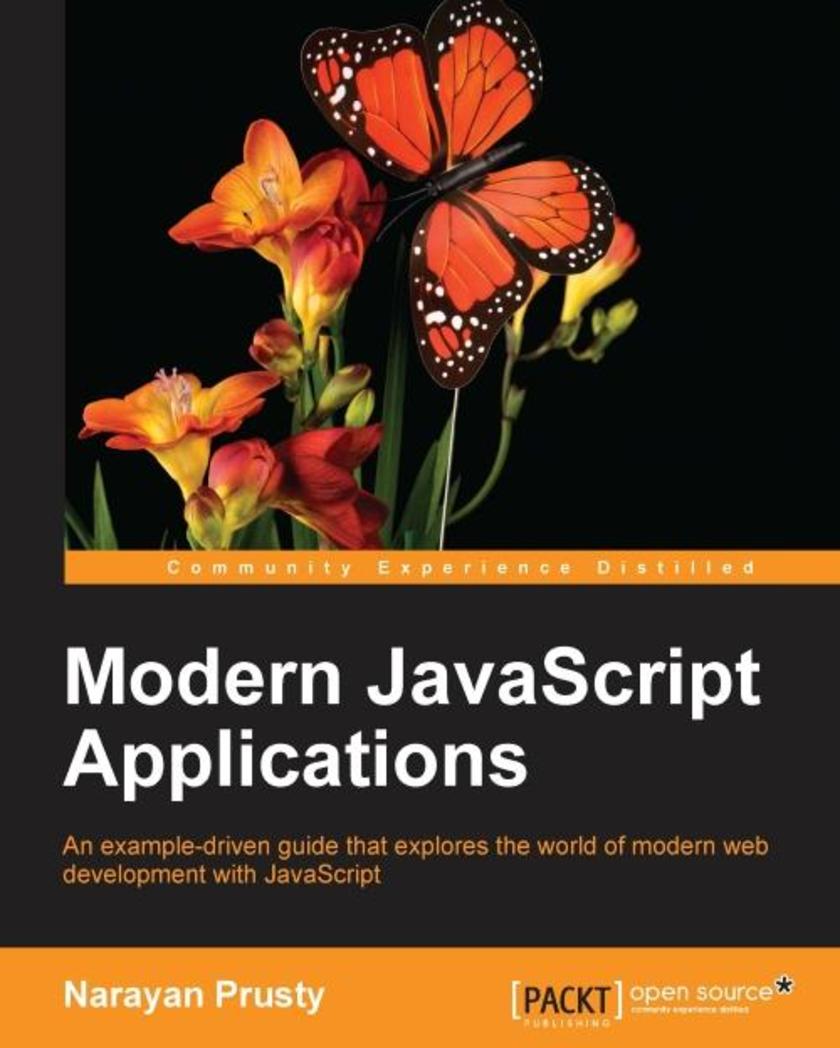
Modern JavaScript Applications
¥90.46
An example-driven guide that explores the world of modern web development with JavaScript About This Book Explore the new features of ECMAScript 6 and how they can be incorporated to build cutting edge web applications Learn about modern web architectures and build real-world apps on top of them Make use of modern JavaScript tools, techniques and frameworks to enhance your web development skills Who This Book Is For This book is for existing JavaScript developers who want to explore some of the modern JavaScript features, techniques, and architectures to develop cutting edge web applications. What You Will Learn Learn to create single page websites Gain expertise in responsive and dynamic website design Enable Real-time communications between client-client and client-server/server-client Create APIs for large-scale applications Write complete applications using functional reactive programming In Detail Over the years, JavaScript has taken significant strides in the world of modern web development to enhance the development of a wide range of applications with different architectures. This book explores the advanced and new features that have arrived in JavaScript and how they can be applied to develop high-quality applications with different architectures. The book begins by covering a single page application that builds on the innovative MVC approach using AngularJS. As we move forward, the book shows you how to develop an enterprise-level application with the microservices architecture, using Node to build web services. We then focus on network programming concepts and you’ll build a real-time web application with websockets. When you’ve gained a solid grip on the different architectures, we’ll move on to the area where JavaScript shines, that is, UI development. You’ll learn to build responsive, declarative UIs with React and Bootstrap. As we near the end of this book, you’ll see how the performance of web applications can be enhanced using Functional Reactive Programming (FRP). Along the way, the book also explores how the power of JavaScript can be increased multi-fold. After reading this book, you will have a solid knowledge of the latest JavaScript techniques, tools, and architecture to build modern web apps. Style and approach Covering all the new features in ECMAScript 6, this book takes a project-based approach to introduce you to all the latest techniques, tools, and architectures of JavaScript web development. Each project that the book builds will show you a different angle of the power of JavaScript in modern web development.
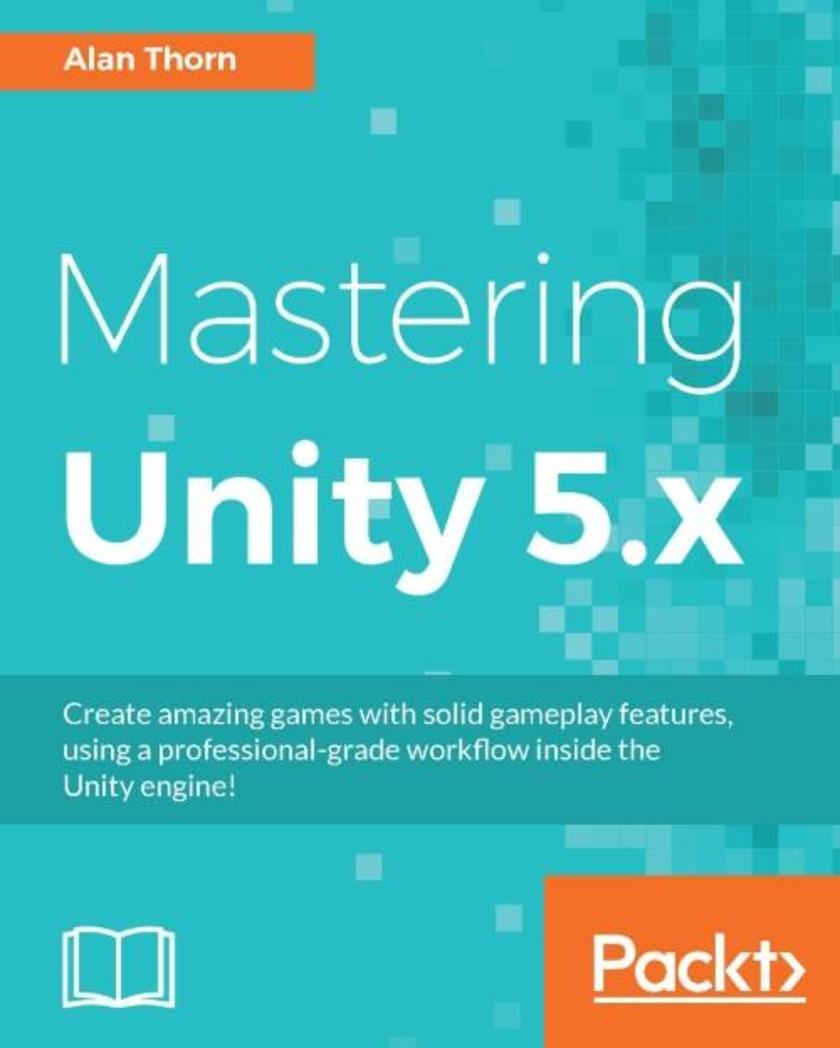
Mastering Unity 5.x
¥90.46
Create amazing games with solid gameplay features, using a professional-grade workflow inside the Unity engine! About This Book Become a Unity master by creating a practical, in-depth game-development project with Unity Use advanced C# *ing to unlock the complete potential of Unity 5 Use Version Control to Effectively Manage and Scale your workflow Who This Book Is For If you are a Unity developer who now wants to develop and deploy interesting games by leveraging the new features of Unity 5.x, then this is the book for you. Basic knowledge of C# programming is assumed. What You Will Learn Explore hands-on tasks and real-world scenarios to make a Unity horror adventure game Create enemy characters that act intelligently and make reasoned decisions Use data files to save and restore game data in a way that is platform-agnostic Get started with VR development Use Navigation Meshes, Occlusion Culling, and the Profiler tools Work confidently with GameObjects, Rotations, and Transformations Understand specific gameplay features such as AI enemies, inventory systems, and level design In Detail Do you want to take the leap from being an everyday Unity developer to being a pro game developerThen look no further! This book is your one stop solution to creating mesmerizing games with lifelike features and amazing gameplay. This book takes an in-depth focus on a practical project with Unity, building a first-person game with many features. You’ll dive deep into the architecture of a Unity game, creating expansive worlds, interesting render effects, and other features to make your games special. You will create individual game components, use efficient animation techniques, and implement collision and physics effectively. Specifically, we’ll explore optimal techniques for importing game assets, such as meshes and textures; tips and tricks for effective level design; how to animate and * NPCs; how to configure and deploy to mobile devices; how to prepare for VR development; and how to work with version control, and more. By the end of this book, you’ll have developed sufficient competency in Unity development to produce fun games with confidence. Style and approach This book takes a step-by-step, practical tutorial approach. You will create an advanced level Unity game with an emphasis on leveraging the advanced Unity 5 features. You will make the most of the Unity 5 advanced features while you develop the game in its entirety.
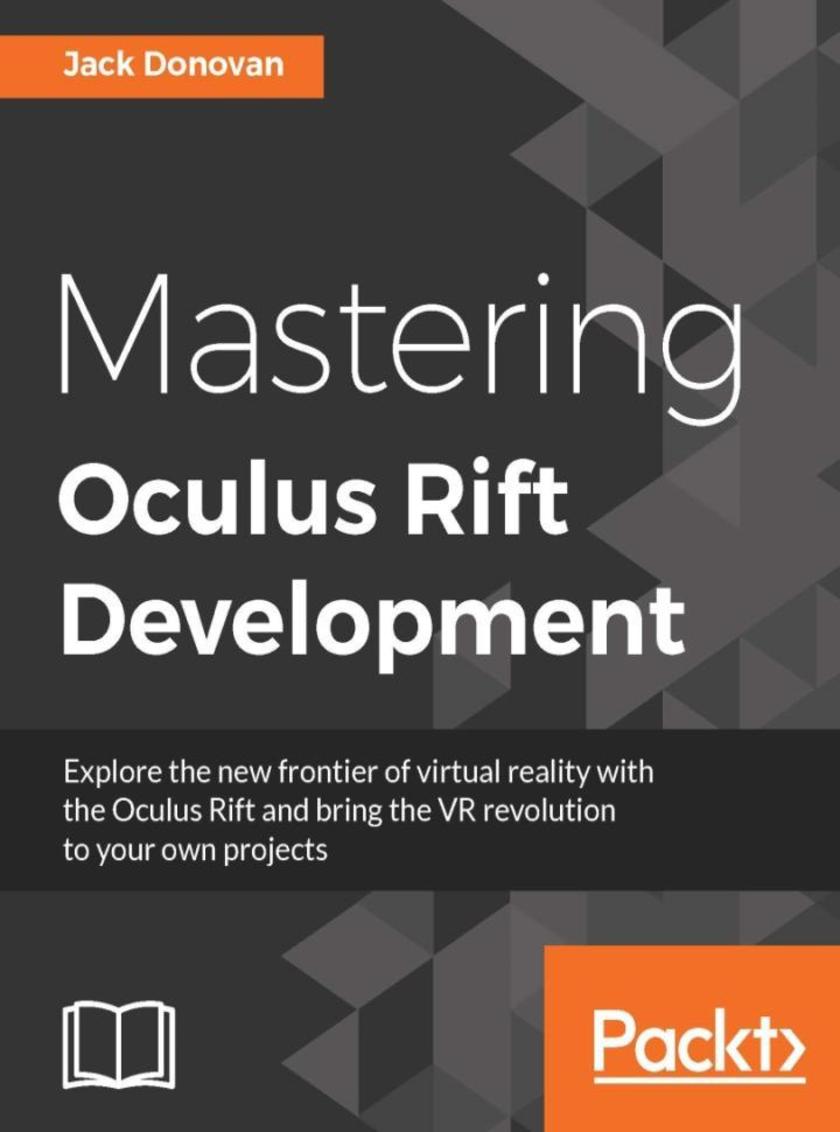
Mastering Oculus Rift Development
¥90.46
Explore the new frontier of virtual reality with the Oculus Rift and bring the VR revolution to your own projects About This Book Create immersive 3D games especially designed for the Oculus Rift platform Build complex realistic virtual reality (VR) games with the Unity Engine Create striking VR environments with advanced graphical techniques Who This Book Is For This book is for aspiring indie developers and VR enthusiasts who want to bring their ideas into virtual reality with a new platform that provides an unprecedented level of realism and immersion. What You Will Learn Increase immersion with 3D audio and intuitive interfaces Create group VR experiences using multi-player networking Design fun and engaging mechanics that utilize VR principles Explore the best ways to navigate and interact using the Oculus Rift Design intuitive ways to navigate and interact with scenes in VR Add stunning realism to a scene with three-dimensional audio Invent mechanics and features that take full advantage of VR hardware In Detail Virtual reality (VR) is changing the world of gaming and entertainment as we know it. VR headsets such as the Oculus Rift immerse players in a virtual world by tracking their head movements and simulating depth, giving them the feeling that they are actually present in the environment. We will first use the Oculus SDK in the book and will then move on to the widely popular Unity Engine, showing you how you can add that extra edge to your VR games using the power of Unity. In this book, you’ll learn how to take advantage of this new medium by designing around each of its unique features. This book will demonstrate the Unity 5 game engine, one of most widely-used engines for VR development, and will take you through a comprehensive project that covers everything necessary to create and publish a complete VR experience for the Oculus Rift. You will also be able to identify the common perils and pitfalls of VR development to ensure that your audience has the most comfortable experience possible. By the end of the book, you will be able to create an advanced VR game for the Oculus Rift, and you’ll have everything you need to bring your ideas into a new reality. Style and approach This book takes a step-by-step tutorial approach with illustrative examples to help you implement the projects on your own. The book lets you first get to grips with the Oculus SDK and then moves on to the Unity Engine to add realistic graphics and features in your games.
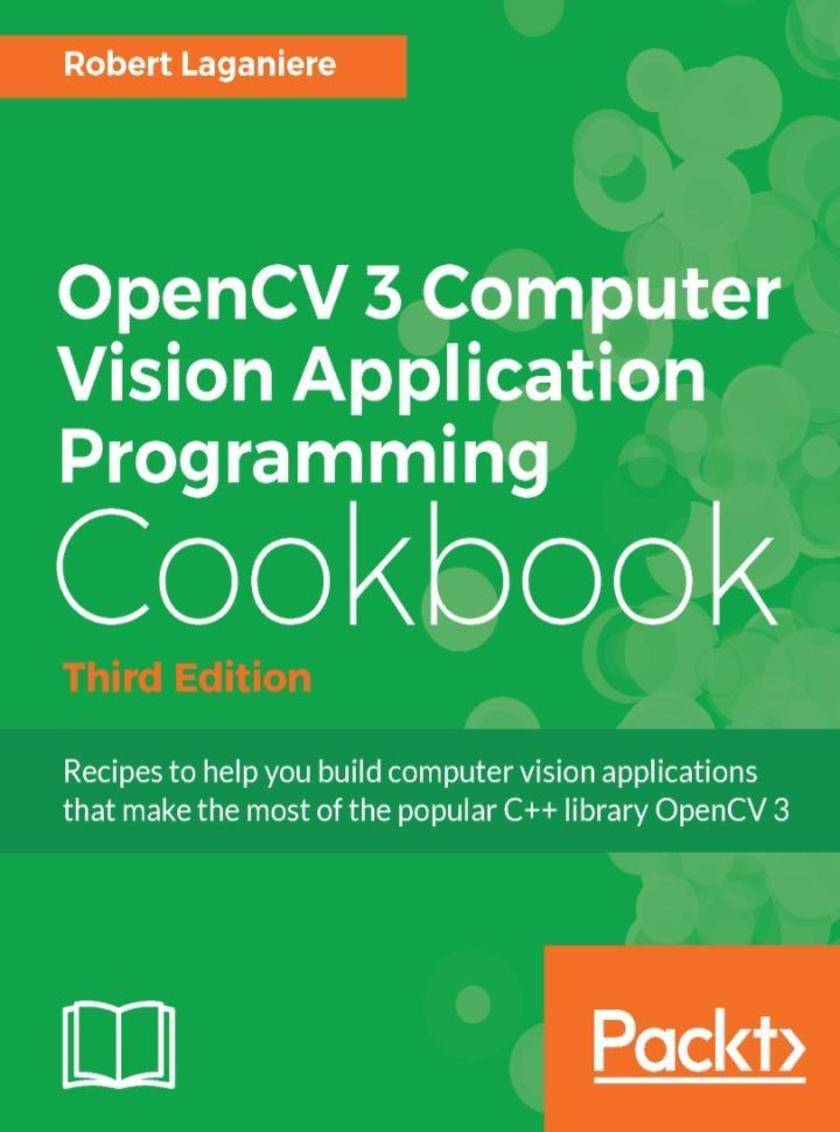
OpenCV 3 Computer Vision Application Programming Cookbook - Third Edition
¥90.46
Recipes to help you build computer vision applications that make the most of the popular C++ library OpenCV 3 About This Book Written to the latest, gold-standard specification of OpenCV 3 Master OpenCV, the open source library of the computer vision community Master fundamental concepts in computer vision and image processing Learn about the important classes and functions of OpenCV with complete working examples applied to real images Who This Book Is For OpenCV 3 Computer Vision Application Programming Cookbook Third Edition is appropriate for novice C++ programmers who want to learn how to use the OpenCV library to build computer vision applications. It is also suitable for professional software developers who wish to be introduced to the concepts of computer vision programming. It can also be used as a companion book for university-level computer vision courses. It constitutes an excellent reference for graduate students and researchers in image processing and computer vision. What You Will Learn Install and create a program using the OpenCV library Process an image by manipulating its pixels Analyze an image using histograms Segment images into homogenous regions and extract meaningful objects Apply image filters to enhance image content Exploit the image geometry in order to relay different views of a pictured scene Calibrate the camera from different image observations Detect people and objects in images using machine learning techniques Reconstruct a 3D scene from images In Detail Making your applications see has never been easier with OpenCV. With it, you can teach your robot how to follow your cat, write a program to correctly identify the members of One Direction, or even help you find the right colors for your redecoration. OpenCV 3 Computer Vision Application Programming Cookbook Third Edition provides a complete introduction to the OpenCV library and explains how to build your first computer vision program. You will be presented with a variety of computer vision algorithms and exposed to important concepts in image and video analysis that will enable you to build your own computer vision applications. This book helps you to get started with the library, and shows you how to install and deploy the OpenCV library to write effective computer vision applications following good programming practices. You will learn how to read and write images and manipulate their pixels. Different techniques for image enhancement and shape analysis will be presented. You will learn how to detect specific image features such as lines, circles or corners. You will be introduced to the concepts of mathematical morphology and image filtering. The most recent methods for image matching and object recognition are described, and you’ll discover how to process video from files or cameras, as well as how to detect and track moving objects. Techniques to achieve camera calibration and perform multiple-view analysis will also be explained. Finally, you’ll also get acquainted with recent approaches in machine learning and object classification. Style and approach This book will arm you with the basics you need to start writing world-aware applications right from a pixel level all the way through to processing video sequences.
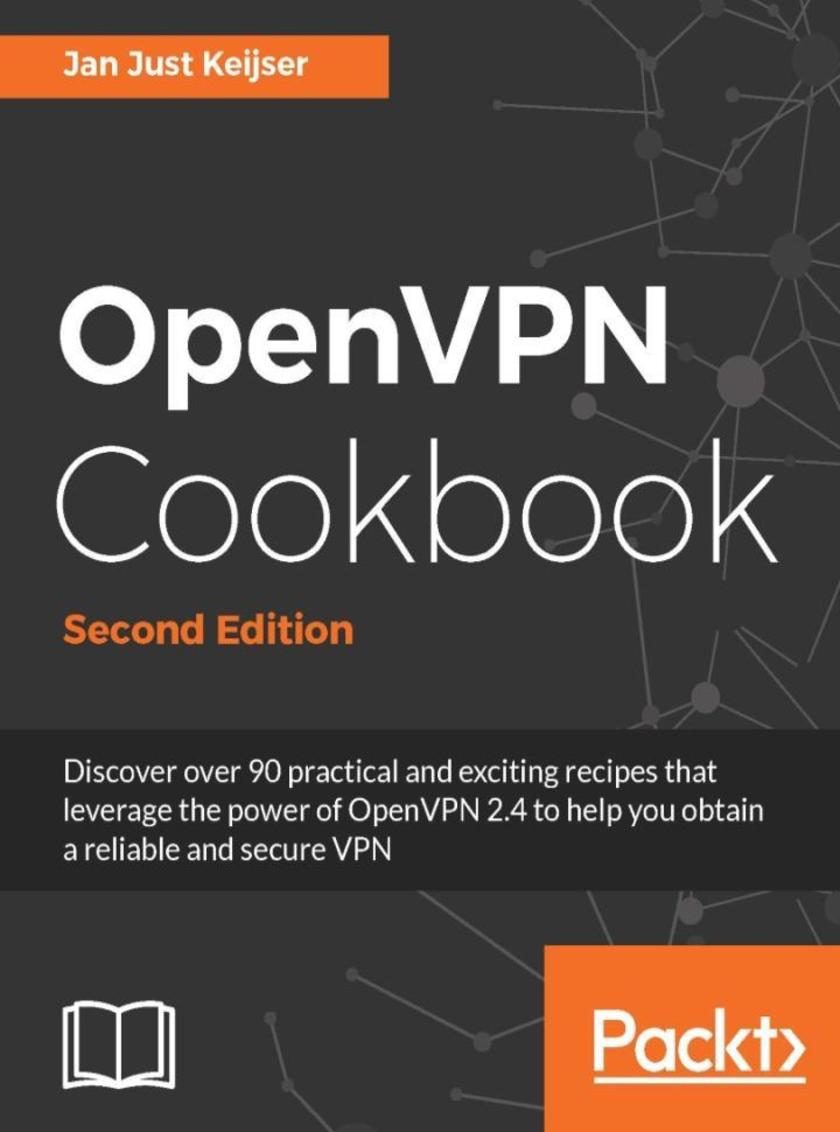
OpenVPN Cookbook - Second Edition
¥90.46
Discover over 90 practical and exciting recipes that leverage the power of OpenVPN 2.4 to help you obtain a reliable and secure VPN About This Book Master the skills of configuring, managing, and securing your VPN using the latest OpenVPN Gain expertise in establishing IPv6 connections and understand PolarSSL using the latest version of OpenVPN This book contains enticing recipes about OpenVPN functionalities that cater to mission critical applications Who This Book Is For This book is for system administrators who have a basic knowledge of OpenVPN and are eagerly waiting to build, secure, and manage VPNs using the latest version. This book assumes some prior knowledge of TCP/IP networking and OpenVPN and you must have network administration skills to get the most out of this book. What You Will Learn Determine the best type of OpenVPN setup for your networking needs Get to grips with the encryption, authentication, and certifications features of OpenSSL. Integrate an OpenVPN server into the local IT infrastructure with the *ing features of OpenVPN Ease the integration of Windows clients into the VPN using Windows-specific client-side configuration Understand the authentication plugins for PAM and LDAP Get to know the difference between TUN-style and TAP-style networks and when to use what Troubleshoot your VPN setup Establish a connection via IPv6 along with demonstrations In Detail OpenVPN provides an extensible VPN framework that has been designed to ease site-specific customization, such as providing the capability to distribute a customized installation package to clients, and supporting alternative authentication methods via OpenVPN’s plugin module interface. This book provides you with many different recipes to help you set up, monitor, and troubleshoot an OpenVPN network. You will learn to configure a scalable, load-balanced VPN server farm that can handle thousands of dynamic connections from incoming VPN clients. You will also get to grips with the encryption, authentication, security, extensibility, and certifications features of OpenSSL. You will also get an understanding of IPv6 support and will get a demonstration of how to establish a connection via IPv64. This book will explore all the advanced features of OpenVPN and even some undocumented options, covering all the common network setups such as point-to-point networks and multi-client TUN-style and TAP-style networks. Finally, you will learn to manage, secure, and troubleshoot your virtual private networks using OpenVPN 2.4. Style and approach This practical, recipe-based book covers the core functionalities of OpenVPN ending with troubleshooting, performance tuning and making the readers inquisitive about the advanced features.
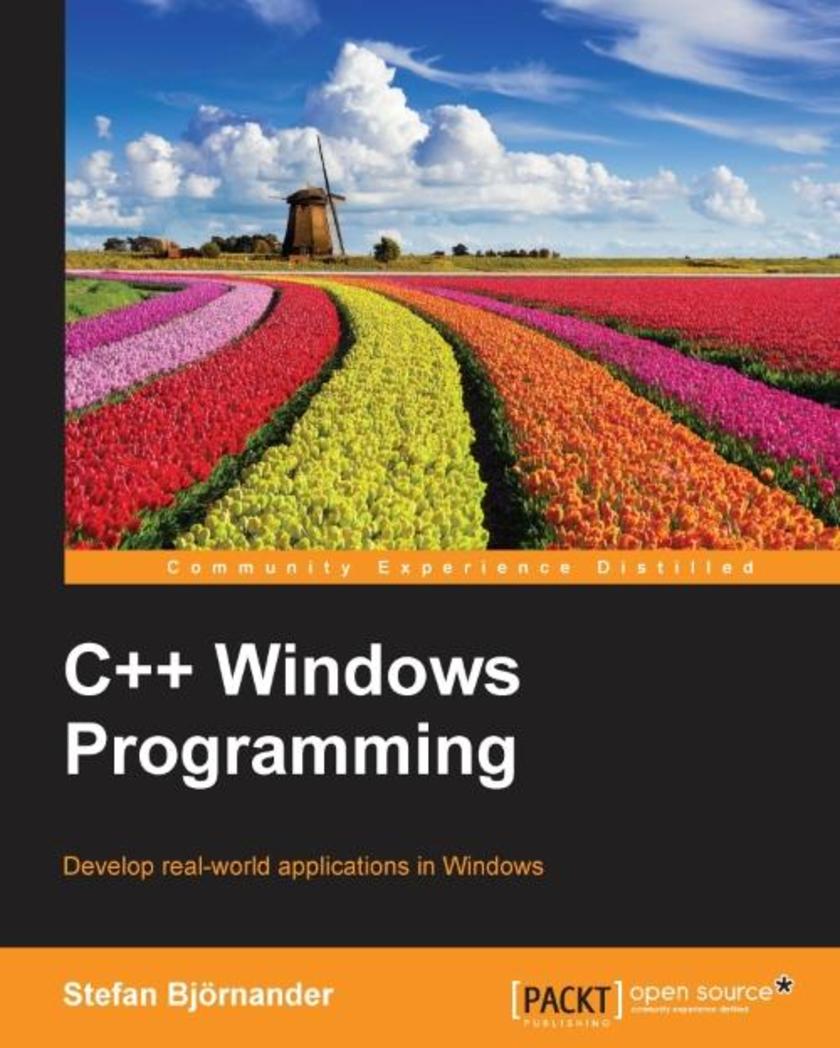
C++ Windows Programming
¥90.46
Develop real-world applications in Windows. About This Book Create diverse applications featuring the versatility of Small Windows C++ library Learn about object-oriented programming in Windows and how to develop a large object-oriented class library in C++ Understand how to tackle application-specific problems along with acquiring a deep understanding of the workings of Windows architecture Who This Book Is For This book is for application developers who want a head-first approach into Windows programming. It will teach you how to develop an object-oriented class library in C++ and enhanced applications in Windows. Basic knowledge of C++ and the object-oriented framework is assumed to get the most out of this book. What You Will Learn Develop advanced real-world applications in Windows Design and implement a graphical object-oriented class library in C++ Get to grips with the workings of the integral aspects of the Win32 API, such as mouse input, drawing, cut-and-paste, file handling, and drop files Identify general problems when developing graphical applications as well as specific problems regarding drawing, spreadsheet, and word processing applications Implement classes, functions, and macros of the object-oriented class library developed in the book and how we implement its functionality by calling functions and macros in the Win32 API In Detail It is critical that modern developers have the right tools to build practical, user-friendly, and efficient applications in order to compete in today’s market. Through hands-on guidance, this book illustrates and demonstrates C++ best practices and the Small Windows object-oriented class library to ease your development of interactive Windows applications. Begin with a focus on high level application development using Small Windows. Learn how to build four real-world applications which focus on the general problems faced when developing graphical applications. Get essential troubleshooting guidance on drawing, spreadsheet, and word processing applications. Finally finish up with a deep dive into the workings of the Small Windows class library, which will give you all the insights you need to build your own object-oriented class library in C++. Style and approach This book takes a tutorial-style approach that will demonstrate the features of a C++ object-oriented library by developing interactive Windows applications.
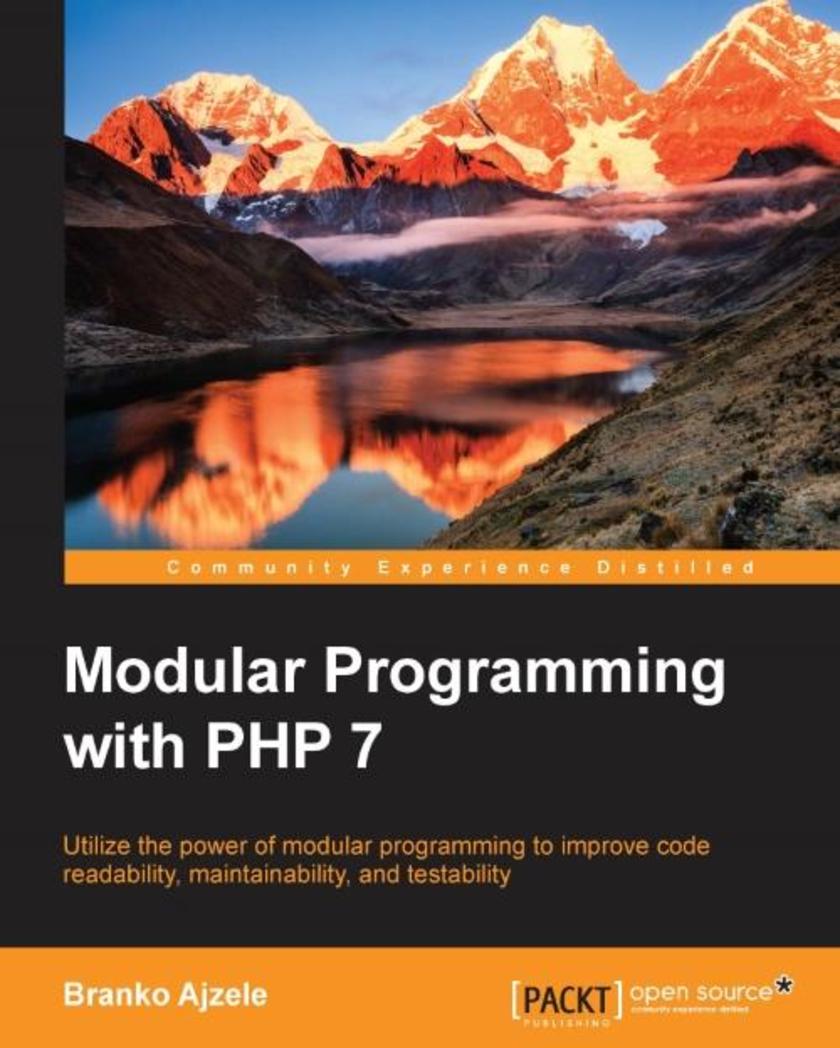
Modular Programming with PHP 7
¥90.46
Utilize the power of modular programming to improve code readability, maintainability, and testability About This Book This book demonstrates code reusability and distributed development to get high speed, maintainable, and fast applications It illustrates the development of a complete modular application developed using PHP7 in detail This book provides a high-level overview of the Symfony framework, a set of tools and a development methodology that are needed to build a modular web shop application Who This Book Is For This step-by-step guide is divided into two sections. The first section explores all the fundamentals of modular design technique with respect to PHP 7. The latter section demonstrates the practical development of individual modules of a web shop application. What You Will Learn Discover the new features of PHP 7 that are relevant to modular application development Write manageable code based on the GoF design patterns and SOLID principles Define the application requirements of a working modular application Explore the ins and outs of the Symfony framework Build a set of modules based on the Symfony framework that comprise a simple web shop app Use core modules to set the structure and dependencies for other modules to use Set up entities that are relevant to the module functionality and see how to manage these entities In Detail Modular design techniques help you build readable, manageable, reusable, and more efficient codes. PHP 7, which is a popular open source *ing language, is used to build modular functions for your software. With this book, you will gain a deep insight into the modular programming paradigm and how to achieve modularity in your PHP code. We start with a brief introduction to the new features of PHP 7, some of which open a door to new concepts used in modular development. With design patterns being at the heart of all modular PHP code, you will learn about the GoF design patterns and how to apply them. You will see how to write code that is easy to maintain and extend over time with the help of the SOLID design principles. Throughout the rest of the book, you will build different working modules of a modern web shop application using the Symfony framework, which will give you a deep understanding of modular application development using PHP 7. Style and approach This book is for intermediate-level PHP developers with little to no knowledge of modular programming who want to understand design patterns and principles in order to better utilize the existing frameworks for modular application development.
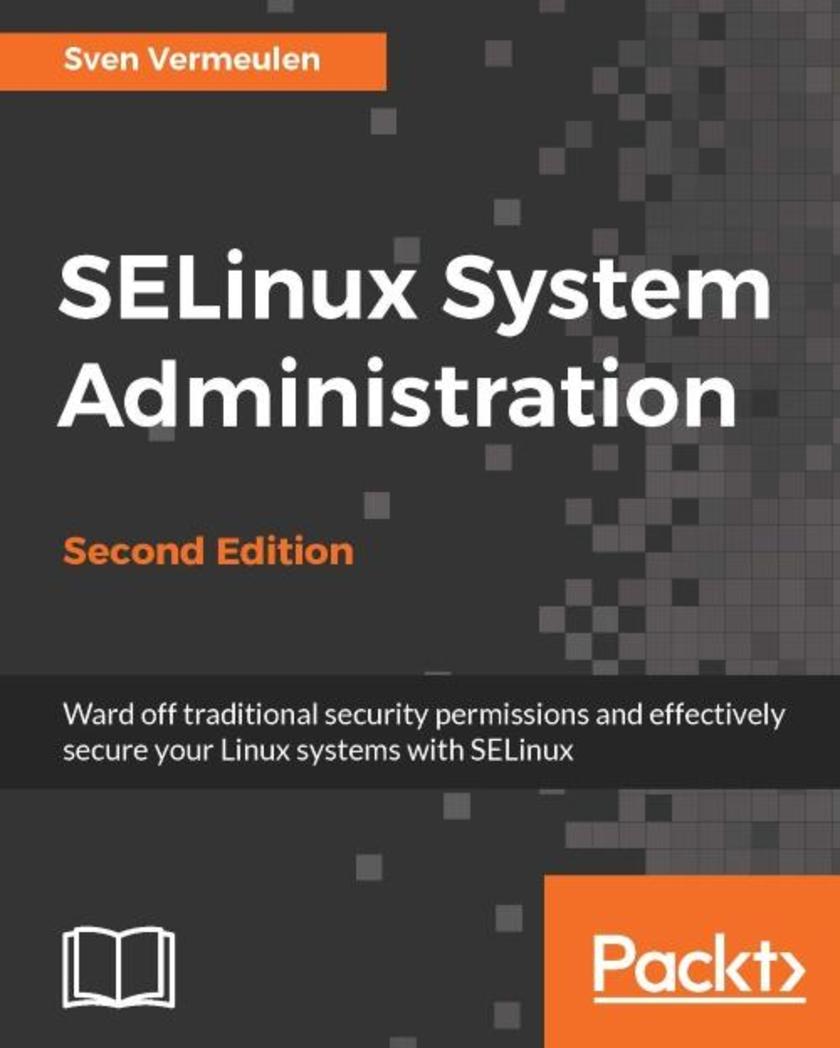
SELinux System Administration - Second Edition
¥90.46
Ward off traditional security permissions and effectively secure your Linux systems with SELinux About This Book Leverage SELinux to improve the secure state of your Linux system A clear approach to adopting SELinux within your organization Essential skills and techniques to help further your system administration career Who This Book Is For This book is for Linux administrators who want to control the secure state of their systems. It’s packed with the latest information on SELinux operations and administrative procedures so you’ll be able to further harden your system through mandatory access control (MAC) – a security strategy that has been shaping Linux security for years. What You Will Learn Analyze SELinux events and selectively enable or disable SELinux enforcement Manage Linux users and associate them with the right role and permission set Secure network communications through SELinux access controls Tune the full service flexibility by dynamically assigning resource labels Handle SELinux access patterns enforced through the system Query the SELinux policy in depth In Detail Do you have the crucial job of protecting your private and company systems from malicious attacks and undefined application behaviorAre you looking to secure your Linux systems with improved access controlsLook no further, intrepid administrator! This book will show you how to enhance your system’s secure state across Linux distributions, helping you keep application vulnerabilities at bay. This book covers the core SELinux concepts and shows you how to leverage SELinux to improve the protection measures of a Linux system. You will learn the SELinux fundamentals and all of SELinux’s configuration handles including conditional policies, constraints, policy types, and audit capabilities. These topics are paired with genuine examples of situations and issues you may come across as an administrator. In addition, you will learn how to further harden the virtualization offering of both libvirt (sVirt) and Docker through SELinux. By the end of the book you will know how SELinux works and how you can tune it to meet your needs. Style and approach This book offers a complete overview of SELinux administration and how it integrates with other components on a Linux system. It covers the majority of SELinux features with a mix of real life scenarios, de*ions, and examples. This book contains everything an administrator needs to customize SELinux.
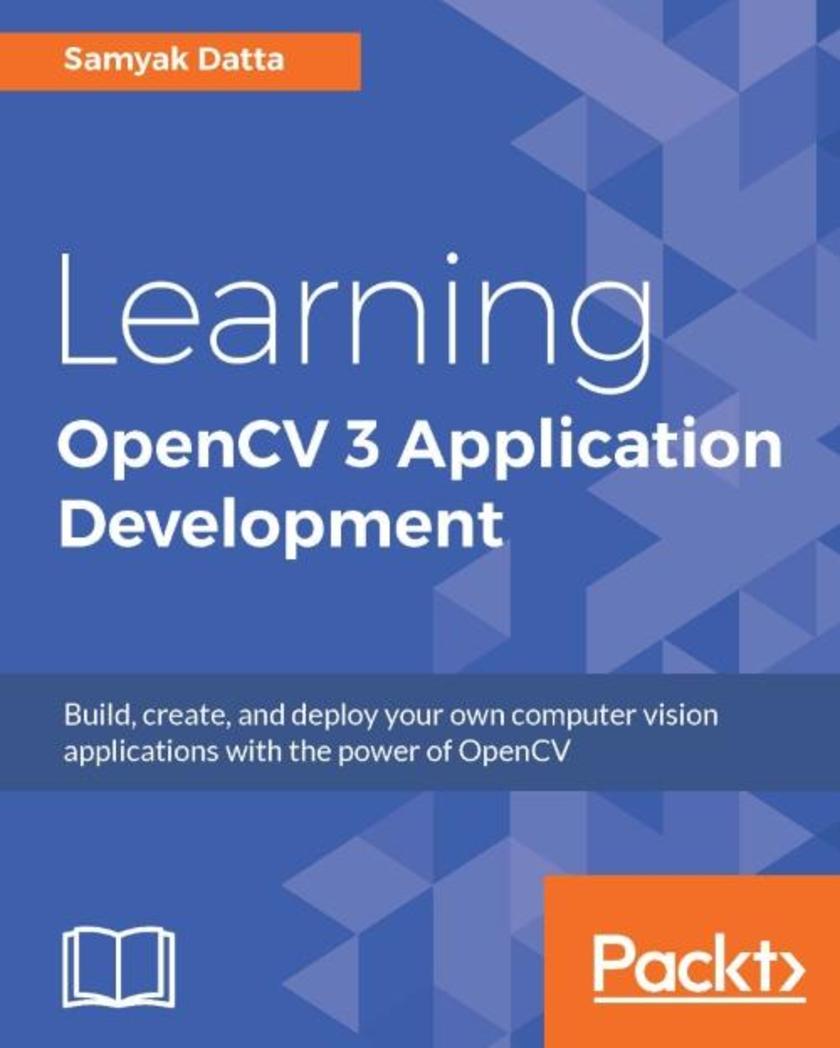
Learning OpenCV 3 Application Development
¥90.46
Build, create, and deploy your own computer vision applications with the power of OpenCV About This Book This book provides hands-on examples that cover the major features that are part of any important Computer Vision application It explores important algorithms that allow you to recognize faces, identify objects, extract features from images, help your system make meaningful predictions from visual data, and much more All the code examples in the book are based on OpenCV 3.1 – the latest version Who This Book Is For This is the perfect book for anyone who wants to dive into the exciting world of image processing and computer vision. This book is aimed at programmers with a working knowledge of C++. Prior knowledge of OpenCV or Computer Vision/Machine Learning is not required. What You Will Learn Explore the steps involved in building a typical computer vision/machine learning application Understand the relevance of OpenCV at every stage of building an application Harness the vast amount of information that lies hidden in images into the apps you build Incorporate visual information in your apps to create more appealing software Get acquainted with how large-scale and popular image editing apps such as Instagram work behind the scenes by getting a glimpse of how the image filters in apps can be recreated using simple operations in OpenCV Appreciate how difficult it is for a computer program to perform tasks that are trivial for human beings Get to know how to develop applications that perform face detection, gender detection from facial images, and handwritten character (digit) recognition In Detail Computer vision and machine learning concepts are frequently used in practical computer vision based projects. If you’re a novice, this book provides the steps to build and deploy an end-to-end application in the domain of computer vision using OpenCV/C++. At the outset, we explain how to install OpenCV and demonstrate how to run some simple programs. You will start with images (the building blocks of image processing applications), and see how they are stored and processed by OpenCV. You’ll get comfortable with OpenCV-specific jargon (Mat Point, Scalar, and more), and get to know how to traverse images and perform basic pixel-wise operations. Building upon this, we introduce slightly more advanced image processing concepts such as filtering, thresholding, and edge detection. In the latter parts, the book touches upon more complex and ubiquitous concepts such as face detection (using Haar cascade classifiers), interest point detection algorithms, and feature de*ors. You will now begin to appreciate the true power of the library in how it reduces mathematically non-trivial algorithms to a single line of code! The concluding sections touch upon OpenCV’s Machine Learning module. You will witness not only how OpenCV helps you pre-process and extract features from images that are relevant to the problems you are trying to solve, but also how to use Machine Learning algorithms that work on these features to make intelligent predictions from visual data! Style and approach This book takes a very hands-on approach to developing an end-to-end application with OpenCV. To avoid being too theoretical, the de*ion of concepts are accompanied simultaneously by the development of applications. Throughout the course of the book, the projects and practical, real-life examples are explained and developed step by step in sync with the theory.
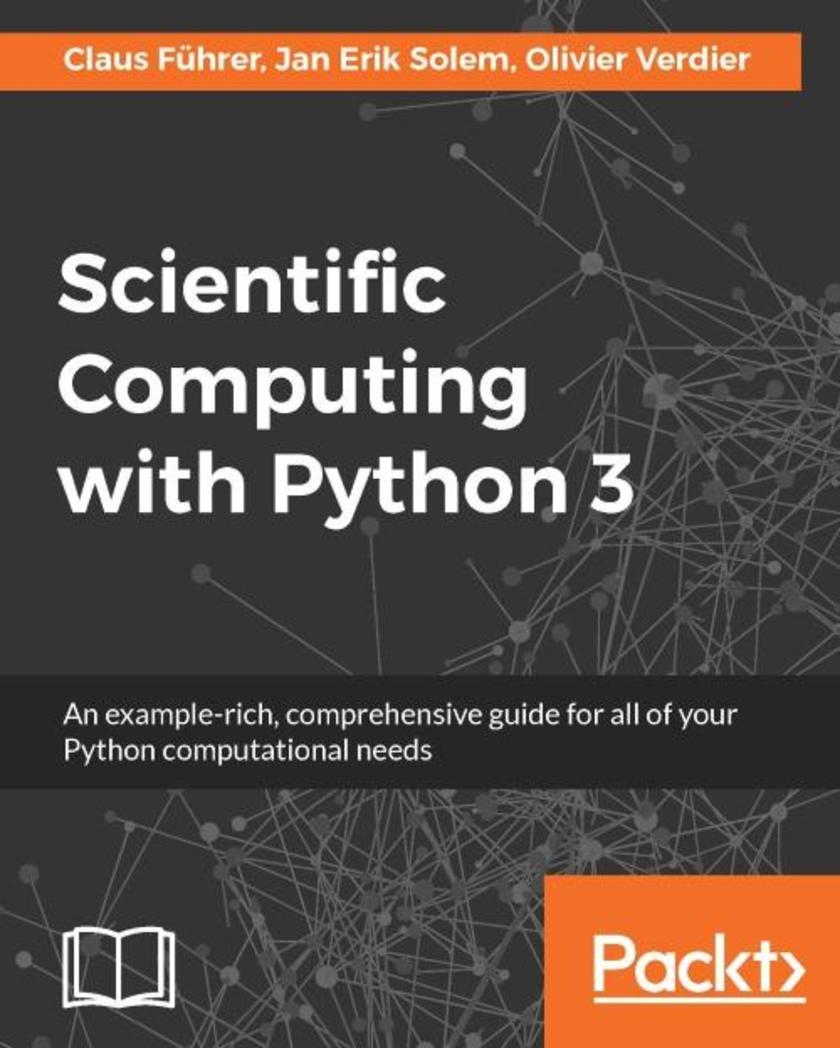
Scientific Computing with Python 3
¥90.46
An example-rich, comprehensive guide for all of your Python computational needs About This Book Your ultimate resource for getting up and running with Python numerical computations Explore numerical computing and mathematical libraries using Python 3.x code with SciPy and NumPy modules A hands-on guide to implementing mathematics with Python, with complete coverage of all the key concepts Who This Book Is For This book is for anyone who wants to perform numerical and mathematical computations in Python. It is especially useful for developers, students, and anyone who wants to use Python for computation. Readers are expected to possess basic a knowledge of scientific computing and mathematics, but no prior experience with Python is needed. What You Will Learn The principal syntactical elements of Python The most important and basic types in Python The essential building blocks of computational mathematics, linear algebra, and related Python objects Plot in Python using matplotlib to create high quality figures and graphics to draw and visualize your results Define and use functions and learn to treat them as objects How and when to correctly apply object-oriented programming for scientific computing in Python Handle exceptions, which are an important part of writing reliable and usable code Two aspects of testing for scientific programming: Manual and Automatic In Detail Python can be used for more than just general-purpose programming. It is a free, open source language and environment that has tremendous potential for use within the domain of scientific computing. This book presents Python in tight connection with mathematical applications and demonstrates how to use various concepts in Python for computing purposes, including examples with the latest version of Python 3. Python is an effective tool to use when coupling scientific computing and mathematics and this book will teach you how to use it for linear algebra, arrays, plotting, iterating, functions, polynomials, and much more. Style and approach This book takes a concept-based approach to the language rather than a systematic introduction. It is a complete Python tutorial and introduces computing principles, using practical examples to and showing you how to correctly implement them in Python. You’ll learn to focus on high-level design as well as the intricate details of Python syntax. Rather than providing canned problems to be solved, the exercises have been designed to inspire you to think about your own code and give you real-world insight.
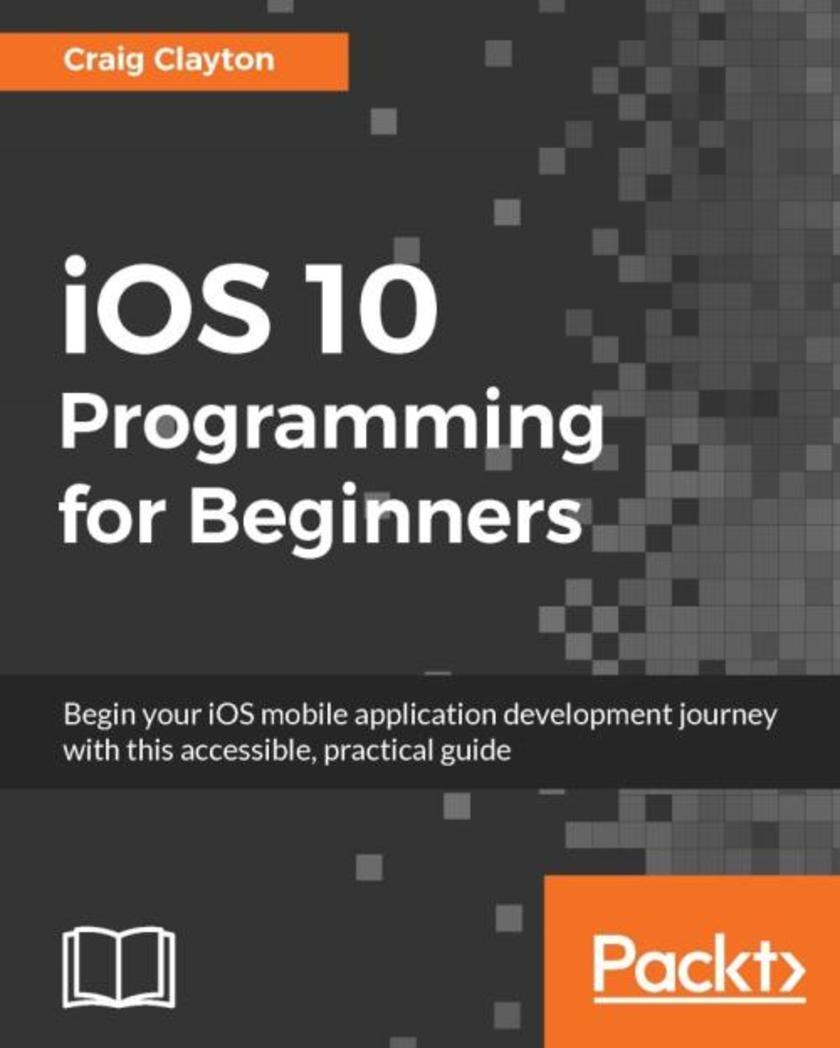
iOS 10 Programming for Beginners
¥90.46
Begin your iOS mobile application development journey with this accessible, practical guide About This Book Use Swift 3 and latest iOS 10 features to build awesome apps for iPhone and iPad Explore and use a wide range of Apple development tools to become a confident iOS developer From prototype to App Store—find out how to build an app from start to finish! Who This Book Is For This book is for beginners who want to be able to create iOS applications. If you have some programming experience, this book is a great way to get a full understanding of how to create an iOS application from scratch and submit it to the App Store. You do not need any knowledge of Swift or any prior programming experience. What You Will Learn Get to grips with Swift 3 and Xcode, the building blocks of Apple development Get to know the fundamentals of Swift, including variables, constants, and control flow Discover the distinctive design principles that define the iOS user experience See how to prototype your app with Swift’s Playgrounds feature Build a responsive UI that looks great on a range of devices Find out how to use CoreLocation to add location services to your app Add push notifications to your app Make your app able to be used on both iPhone and iPad In Detail You want to build iOS applications for iPhone and iPad—but where do you startForget sifting through tutorials and blog posts, this is a direct route into iOS development, taking you through the basics and showing you how to put the principles into practice. With every update, iOS has become more and more developer-friendly, so take advantage of it and begin building applications that might just take the App Store by storm! Whether you’re an experienced programmer or a complete novice, this book guides you through every facet of iOS development. From Xcode and Swift—the building blocks of modern Apple development—and Playgrounds for beginners, one of the most popular features of the iOS development experience, you’ll quickly gain a solid foundation to begin venturing deeper into your development journey. For the experienced programmer, jump right in and learn the latest iOS 10 features. You’ll also learn the core elements of iOS design, from tables to tab bars, as well as more advanced topics such as gestures and animations that can give your app the edge. Find out how to manage databases, as well as integrating standard elements such as photos, GPS into your app. With further guidance on beta testing with TestFlight, you’ll quickly learn everything you need to get your project on the App Store! Style and approach Created for anyone that wants to build their first iOS application, this book offers practical, actionable guidance through iOS development. Combining engaging visuals with accessible, step-by-step instructiona and explanation, this book will not only develop the your understanding, but also show you how to put your knowledge to work.
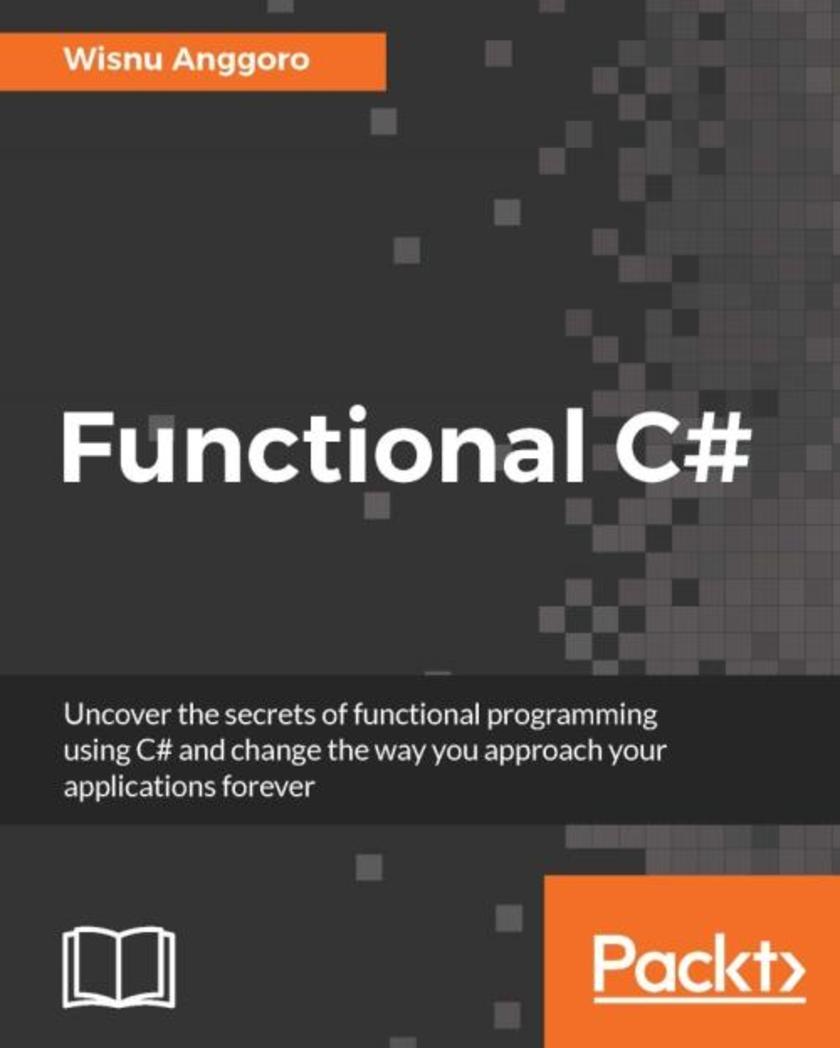
Functional C#
¥90.46
Uncover the secrets of functional programming using C# and change the way you approach your applications forever About This Book This book focuses on the functional paradigm of C#, which will give you a whole new angle on coding with C# It illustrates the advantages that functional programming brings to the table and the associated coding benefits This practical guide covers all the aspects of functional programming and provides solutions that can be applied in business scenarios Who This Book Is For This book is suitable for C# developers with basic prior knowledge of C# and with no functional programming experience at all. What You Will Learn Develop an application using the functional approach Implement unit testing to functionally program code Create efficient code using functional programming Work through a LINQ query so you can work with data Compose asynchronous programs to create a responsive application Use recursion in function programming in order to simplify code Optimize the program code using Laziness and Caching Techniques In Detail Functional programming makes your application faster, improves performance, and increases your productivity. C# code is written at a higher level of abstraction, so that code will be closer to business requirements, abstracting away many low-level implementation details. This book bridges the language gap for C# developers by showing you how to create and consume functional constructs in C#. We also bridge the domain gap by showing how functional constructs can be applied in business scenarios. We’ll take you through lambda expressions and extension methods, and help you develop a deep understanding of the concepts and practices of LINQ and recursion in C#. By the end of the book, you will be able to write code using the best approach and will be able to perform unit testing in functional programming, changing how you write your applications and revolutionizing your projects. Style and approach This book takes a pragmatic approach and shows you techniques to write better functional constructs in C#. We’ll also show you how these concepts can be applied in business scenarios.
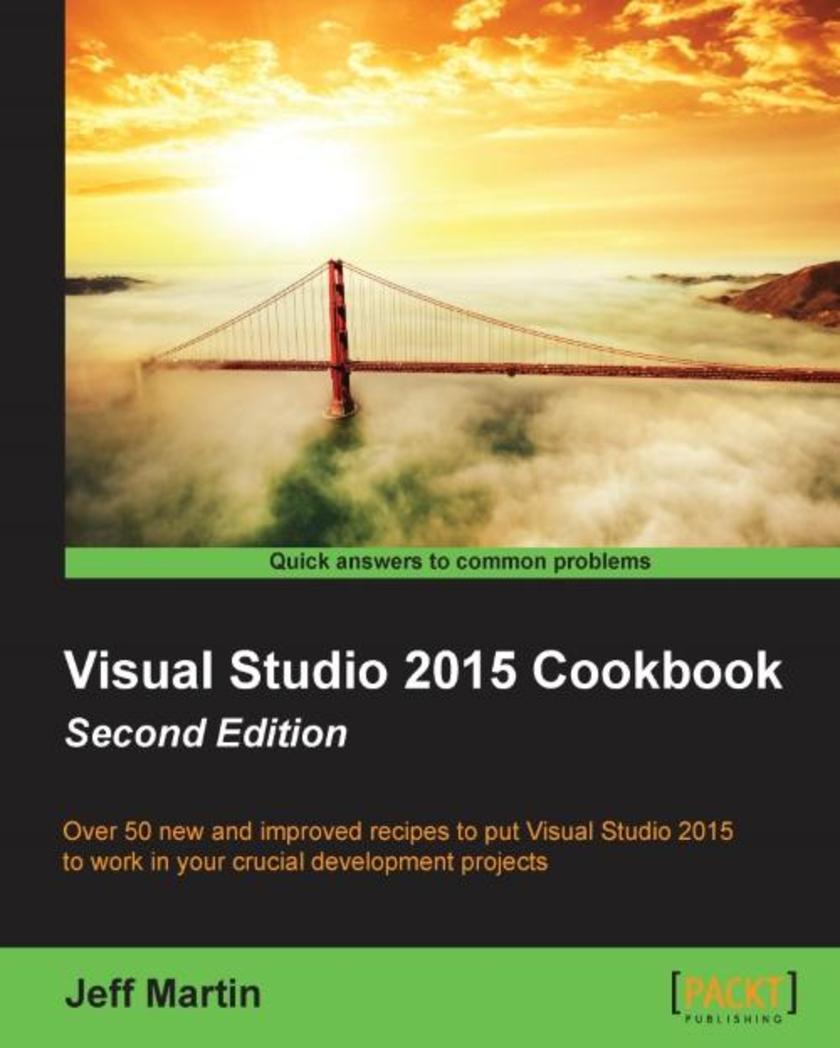
Visual Studio 2015 Cookbook - Second Edition
¥90.46
Over 50 new and improved recipes to put Visual Studio 2015 to work in your crucial development projects About This Book Get to grips with all the new Visual Studio 2015 features regardless of your preferred programming language Apply Visual Studio to all areas of development: writing, debugging, and application lifecycle maintenance Straightforward and hands-on advice for building both Windows and Android apps Who This Book Is For If you are a developer excited about the new features introduced in Visual Studio 2015, then no matter what your programming language of choice is, Visual Studio 2015 Cookbook is for you. You should have a good knowledge of working with previous versions of Visual Studio to benefit from the recipes in this book. What You Will Learn Customize the editor's new abilities to fit your development style Create apps for Windows Use Visual Studio to debug parallel and concurrent programs Integrate .NET Framework 4.6 effectively Put TypeScript to work in your web applications Develop modern C++11 with Visual Studio 2015 Protect and manage your source code with Team Foundation Server In Detail Visual Studio 2015 is the premier tool for developers targeting the Microsoft platform. Learning how to effectively use this technology can enhance your productivity while simplifying your most common tasks, allowing you more time to focus on your project. Visual Studio 2015 is packed with improvements that increase productivity, and this book walks you through each one in succession to help you smooth your workflow and get more accomplished. From customization and the interface to code snippets and debugging, the Visual Studio upgrade expands your options — and this book is your fast-track guide to getting on board quickly. Visual Studio 2015 Cookbook will introduce you to all the new areas of Visual Studio and how they can quickly be put to use to improve your everyday development tasks. With this book, you will learn not only what VS2015 offers, but what it takes to put it to work for your projects. Style and approach This book is a practical guide to using Visual Studio 2015 and will help you become familiar with the improvements made in previous versions. Each recipe provides a hands-on approach to the new features with step-by-step instructions on how to increase your productivity.




 购物车
购物车 个人中心
个人中心



